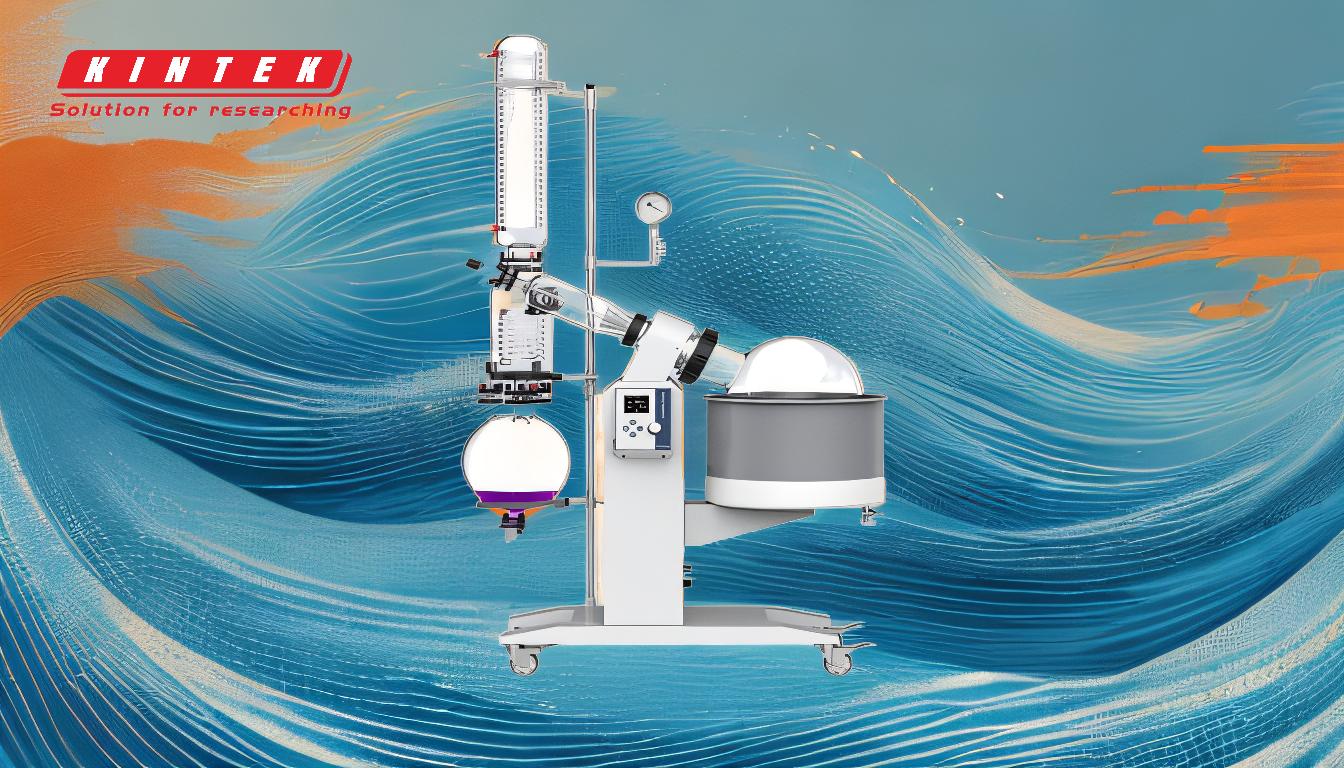Removing solvent from a mixture using a rotary evaporator is a common laboratory technique that involves heating the mixture under reduced pressure to evaporate the solvent, which is then condensed and collected. The process is efficient and widely used for solvent removal due to its ability to lower the boiling point of solvents, making it suitable for heat-sensitive compounds. Below is a detailed guide on how to perform this process effectively.
Key Points Explained:

-
Preparation of the Rotary Evaporator:
- Ensure the water bath is heated to the appropriate temperature for the solvent being removed.
- Check that the condenser is properly chilled, typically by circulating cold water or a coolant.
- Secure the round-bottom flask containing the mixture to the rotary evaporator using a clip to prevent it from detaching during rotation.
-
Setting Up the Vacuum:
- Turn on the vacuum pump and gradually increase the vacuum strength. This reduces the pressure inside the system, lowering the boiling point of the solvent.
- Monitor the system to ensure it reaches the desired vacuum level, typically between 400 to 600 mm Hg, depending on the solvent and equipment.
-
Initiating Rotation:
- Start the rotation of the flask at a speed appropriate for the volume of the mixture. A speed of 50 to 160 revolutions per minute is common.
- The rotation creates a thin film of the mixture on the inner surface of the flask, increasing the surface area for evaporation and promoting efficient solvent removal.
-
Lowering the Flask into the Water Bath:
- Gradually lower the flask into the heated water bath. The heat from the bath facilitates the evaporation of the solvent.
- Monitor the process closely to avoid bumping, where sudden boiling can cause the mixture to splash into the condenser.
-
Monitoring the Evaporation Process:
- Observe the condensation of solvent vapors in the condenser and the collection of the solvent in the receiving flask.
- Adjust the vacuum strength and water bath temperature as needed to maintain a steady evaporation rate without causing bumping.
-
Completing the Process:
- Once all the solvent has been evaporated, raise the flask out of the water bath and stop the rotation.
- Turn off the vacuum pump and carefully release the vacuum by opening the system to atmospheric pressure.
- Remove the flask from the rotary evaporator, ensuring it is handled carefully to avoid spills or contamination.
By following these steps, you can effectively remove solvent from a mixture using a rotary evaporator, ensuring a safe and efficient process. Proper setup, monitoring, and adjustments are key to achieving optimal results.
Summary Table:
| Step | Key Actions |
|---|---|
| Preparation | Heat water bath, chill condenser, secure flask. |
| Setting Up the Vacuum | Turn on vacuum pump, adjust vacuum strength (400-600 mm Hg). |
| Initiating Rotation | Rotate flask at 50-160 RPM for efficient solvent removal. |
| Lowering Flask into Bath | Gradually lower flask into heated water bath, monitor to avoid bumping. |
| Monitoring Evaporation | Observe condensation, adjust vacuum and temperature as needed. |
| Completing the Process | Raise flask, stop rotation, release vacuum, and remove flask carefully. |
Need help optimizing your rotary evaporator process? Contact our experts today for personalized guidance!









